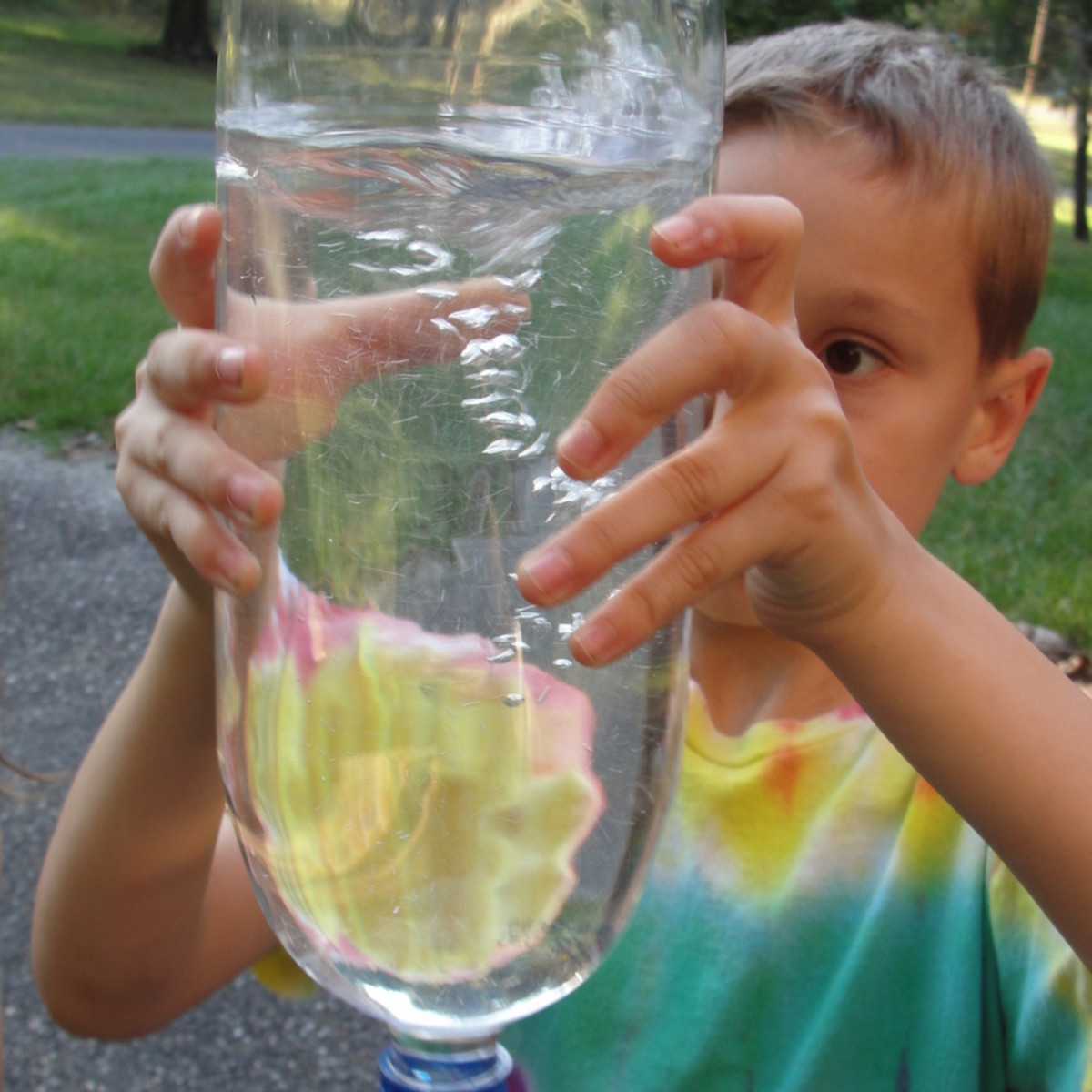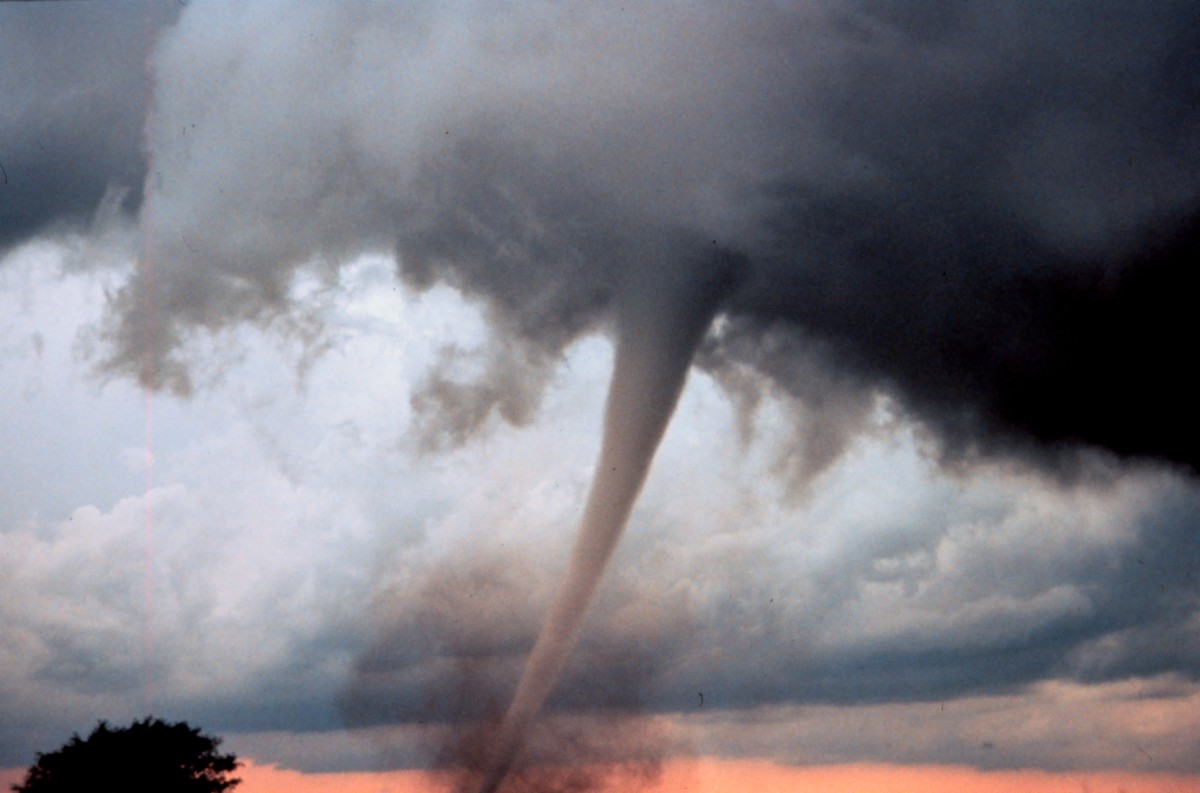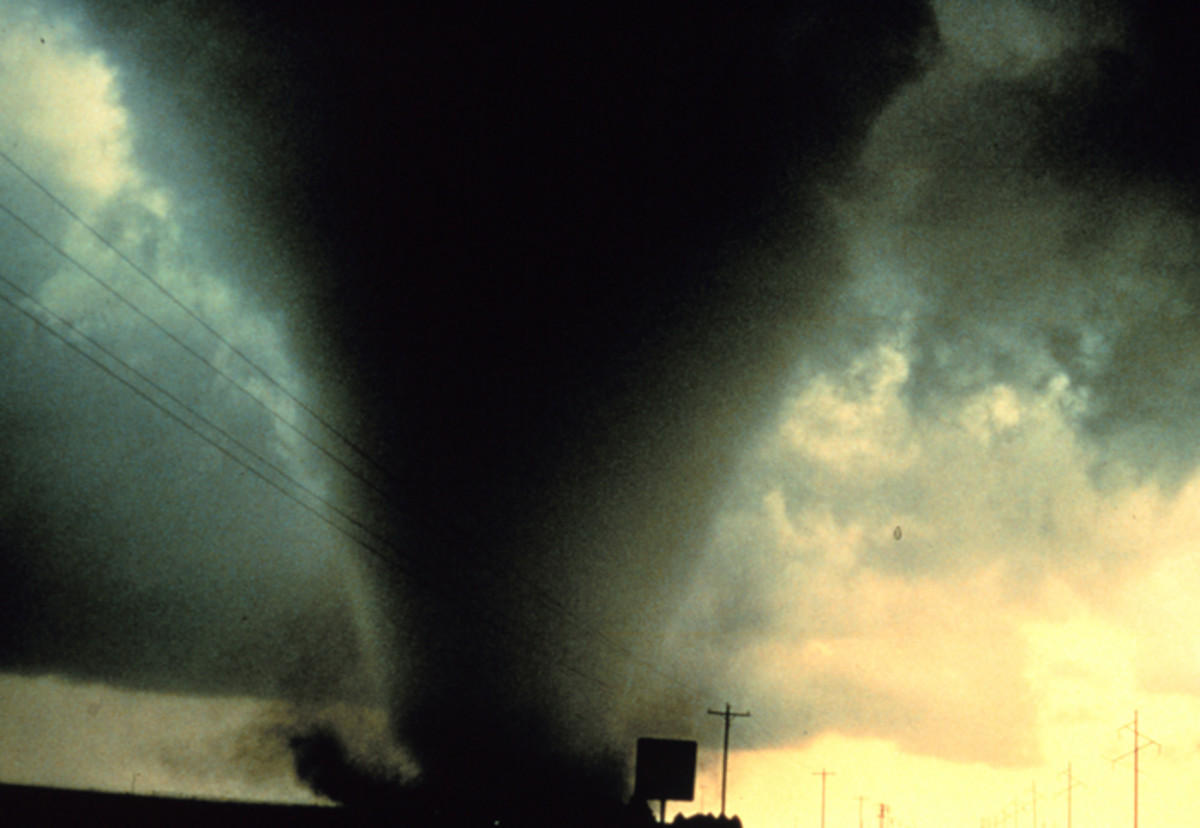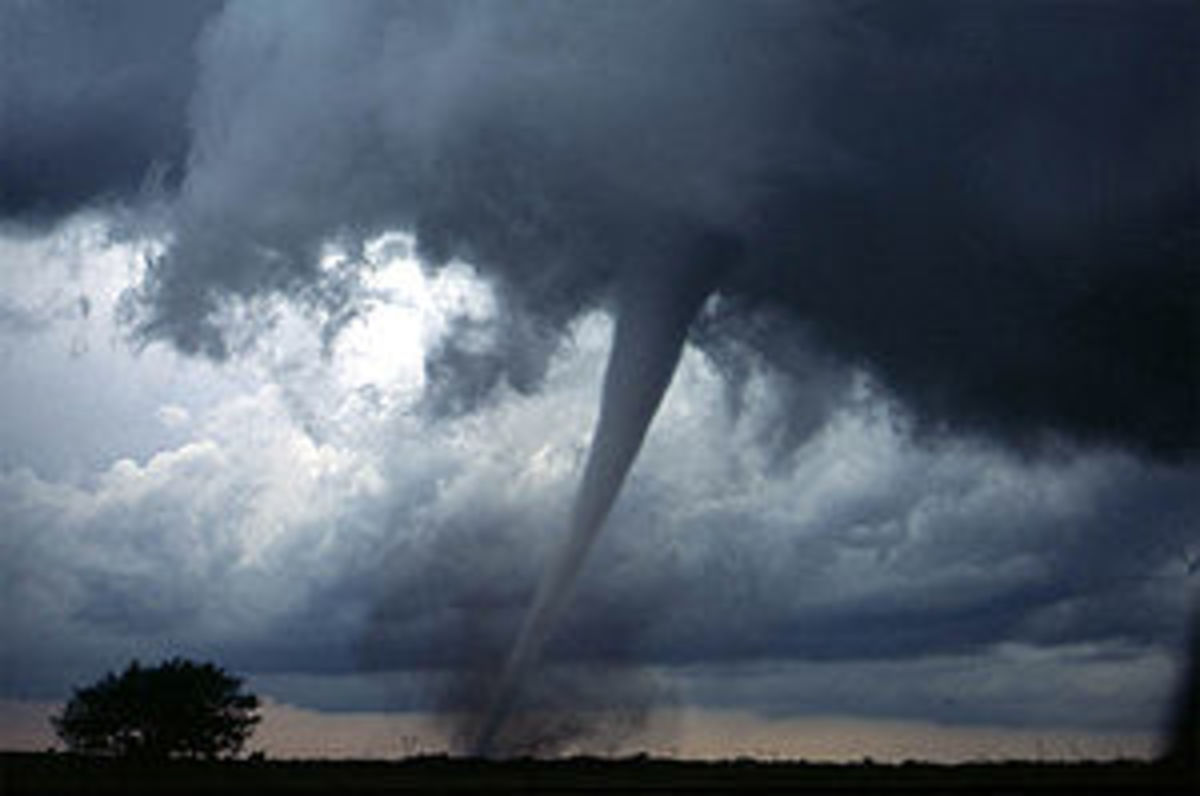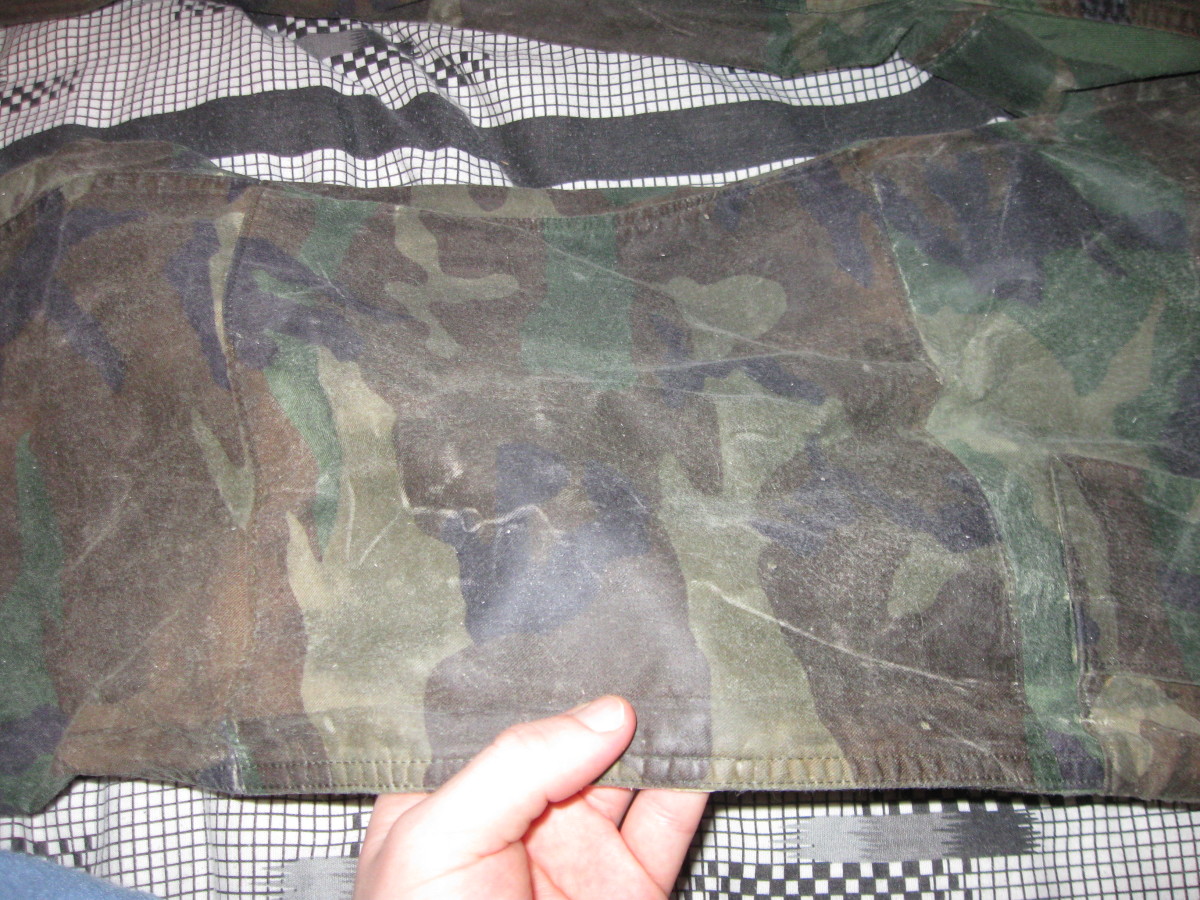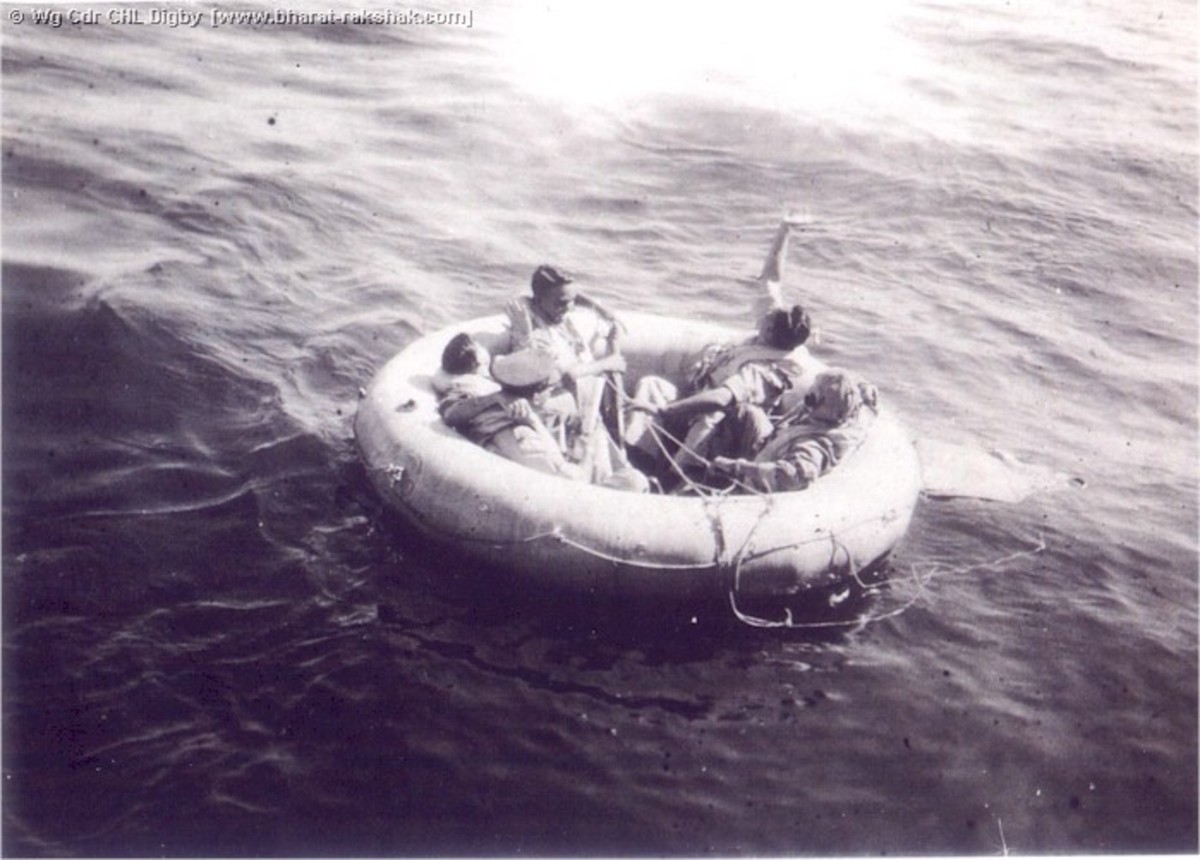Tornado Season 2016 - Are You Ready?
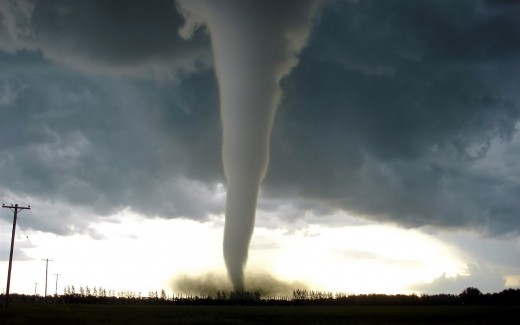
I had originally planned on writing this piece earlier in this new year, as a return to blogging on a regular basis after completing several books (while currently working on others). But given that we’re currently in the transition from winter to spring, and about to enter tornado season, now might be a better time to actually post this piece.
Given that we’re currently in the throes of a particularly strong El Nino event, Tornado Season 2016 has the option of being one of lower levels of tornado activity, or a record year for these powerful, dangerous, and violent windstorms. But for the record, climatologists and meteorologists are actually predicting a less-than-normally-active tornado season (Scientific American, “Lingering El Nino Could Mean Fewer Tornadoes”). However, those who keep abreast of weather forecasts know that nothing is a sure thing in the realm of forecasts. This being the case, it’s always best to err on the side of caution by preparing for this (and future) tornado season.
First and foremost during meteorological tornado season, those living in the Midwest should be alert during any forecast that calls for potential severe weather, particularly in the area within this region known as “Tornado Alley.” Tornado alley is a region within the central U.S., so-named by weather forecasters and meteorologists due to the fact that a majority of the 1,200 tornadoes that strike the U.S. annually occur here, between early to mid-April through mid- to late-June.
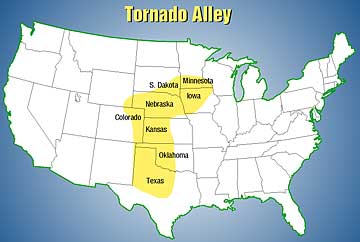
Within Tornado Alley, severe thunderstorms—driven by the heat of the early to late afternoon—can often develop into powerful supercell thunderstorms. It is these high-atmospheric energy thunderstorms from which tornadoes are spawned. And when conditions are present for the development of particularly powerful supercell thunderstorms, the National Weather Service will issue a tornado watch for the affected region. When tornado watches are issued, people –particularly within Tornado Alley—should be aware of changing weather conditions. They should be focused on any severe weather that occurs between the hours of 3 and 7 pm, the period of the day when most tornadoes are likely to form.
And just as those living in Tornado Alley need to be aware of changing weather conditions during tornado seasons, people in other parts of the country need to stay alert when severe weather is a possibility. To this point, there is a secondary region of tornado-prone Southern states known “Dixie Alley’ for who people living in this region need to be likewise alert during periods of potential severe weather. For those in and around Dixie Alley,” tornado season” typically begins earlier—around early- to mid-March—and wanes around mid- to late-May. However, though tornadoes in this region typically peak during this time of year, Dixie Alley is a particularly threatening area for tornadoes because the weather conditions that help create tornadoes tend to be present even beyond this period of the year. That means that tornadoes are possible within this region for a greater part of the year, when conditions are present.
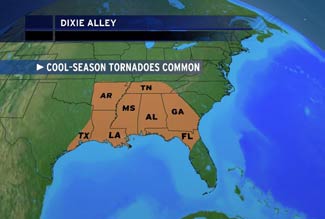
It is even more imperative for this living within this region to be wary of any forecasts involving the potential for severe weather during tornado season. There are several reasons for this. First, the weather conditions that give rise to tornadoes in the Southern part of the country tend to spawn particularly powerful tornadoes. In fact, Dixie Alley tends to host the highest number of EF3 - EF5 rated tornadoes of any region in the country—or the world for that matter (tornadoes are measured on the Enhanced Fujita Scale, ranging from weak EF0 tornadoes that produce winds of up to 85 mph/137 kph, to devastating EF5 killer tornadoes, capable of producing winds greater than 200mph/322 kph). These powerful southern tornadoes tend to also be long-lived twisters, traveling great distances and thus, leaving lengthy paths of destruction, injuries, and deaths in their paths.
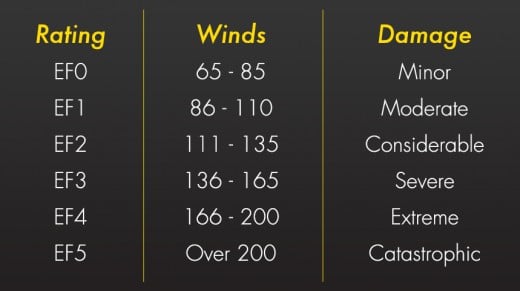
Another reason why tornadoes in Dixie Alley tend to be deadlier than their counterparts in Tornado Alley is the high volume of manufactured homes in the region. This includes a high volume of less sturdy structures such as mobile homes. In even moderately-powerful tornadoes (EF2-EF3), such weak structures offer little resistance—or protection—against such storms. This makes for a greater amount of damage than that experienced by sturdier structures. This situation also tends to result in the creation of more flying debris hurled around at deadly speeds. And flying debris is the greatest single cause of injuries and death in tornadoes.
Finally, because the conditions for tornadoes tend to be far more constant in Dixie Alley, this means that there is a greater frequency of nighttime tornadoes for this region. Specifically, the atmospheric instability caused by the heat of the day that gives rise to tornadoes in the late afternoon to tend remain after dark in this region. The result is the possibility for strong tornadoes not only during the day, but at night as well. Tornadoes that occur at night are even more dangerous than daytime tornadoes because of the decreased visibility of their approach. What’s more, nighttime tornadoes—especially those that occur late night—are all the more dangerous because quite often, many people are asleep in their beds when they happen. This makes it difficult to hear any broadcasts warnings, or even the approach of a tornado itself. Predictably, this increases the likelihood of severe injuries and deaths for those living in Dixie Alley.
Where one lives in Tornado Alley, Dixie Alley, or in any part of the country where tornadoes are a potential threat during the early spring to early summer period (or beyond), the best way to keep abreast of both changing and threatening weather conditions is to take advantage of technology. For those households with internet connections, there are many weather-related websites that one can bookmark to keep up with weather forecasts (e.g., Weather Channel, Accuweather, The National Weather Service, etc.). Furthermore, there are programs available for download that one can install on a laptop or desktop computer that not only provide up-to-the-minute weather forecasts (Weather Bug, Weather Channel Applications), but also provide warnings in the event of weather watches and warnings for a given area. There are also free downloadable smart phone apps (such as the Red Cross’ Tornado app or Weather Bug’s weather app) that feature real-time severe weather warnings.
On the more traditional front, weather radios are still one of the best ways to keep track of potential and approaching severe weather. These specialized radios receive continuous broadcasts from the National Weather Service (NWS) of weather conditions for a given broadcast area, which allows for listeners to plan ahead in the event of changing weather. Weather radios also receive emergency alerts for dangerous weather events, natural disasters and other hazardous threats. Also, most weather radios come with a special feature that allows them to remain silent—until an alert is detected (while radios without this feature constantly play weather forecasts and updates). Those listening to weather radios may be alerted by a “buzz,” siren, or some kind of loud warning signal whenever a severe weather warning is issued by the NWS.
But even with all of the technological advancements in weather forecasting, tornadoes can—and do—occasionally form with little or no advanced warning…or when people are in unfamiliar surroundings. For this reason, it is important to plan in advance of any tornado-related emergency while in familiar surroundings, and know what actions to reduce the likelihood severe injury or death while in unfamiliar locales.
At Home:
Prior to tornado season, identify and designate a “safe room” in the home. This should be a small, windowless room, on the lowest level of the home. Ideally, a safe room should be located in a basement or storm cellar for the greatest amount of protection. The best location is the smallest room in the basement, such as a storage closet or utility room. If no such room is available, the best substitute is to take cover underneath a heavy object, to protect the body from falling debris. In most cases, taking shelter in an underground structure provides the best protection from flying high-velocity objects and powerful tornadic winds.
But in homes without a basement, the safe room should be located in the centermost portion of the home (the purpose of this is to place as many walls and/or barriers between one’s self and the winds produced by severe weather). A small closet within a hallway is the best choice for such a safe room. Another choice for an above-ground safe room is a bathroom in the center of the home, preferably one without windows. In older homes, the walls of interior bathrooms are reinforced with metal pipes between the walls, which afford an added level of protection by helping to buttress the walls in the face of destructive winds created by tornadoes.
If an interior bathroom is the designated safe room, plan to take shelter in the bathtub. Lie down and cover the head. Use a heavy blanket, pillows, or even sports helmets (such as a football or bicycle helmets) to cover the head for added protection from falling and flying debris.
In Apartment Buildings
Because tornadoes are very quick and usually come without much notice, having your plan in place will help lessen the likelihood of injury or death. If a tornado warning is issued for your area, and you reside in an apartment, move to any designated shelter within the building immediately (inquire the building and/or leasing manager if there are any storm shelters in your apartment’s complex or building, particularly in tornado-prone areas).
If you live in an apartment located on an upper floor, get to the lowest level of the building possible, immediately. This could be an underground parking garage or a neighbor’s first floor apartment (make arrangements beforehand). If you live in a high-rise apartment building, there may not have enough time to evacuate to a lower level, so choosing a place in the hallway in the center of the building is the next best option (avoid elevators and use stairwells, which are often reinforced). A closet, bathroom or interior hall without windows is the safest spot an apartment during a tornado.
Mobile Homes
Mobile homes are one of the worst places to be in the event of a tornado. Mobile home residents must consider what they will do in the event of severe weather before ever moving into their homes. And they should always be aware when the weather forecast calls for even the possibility of severe weather. This is because even in weak tornadoes, such dwellings will very likely be destroyed. For this reason, it is absolutely necessary to have a substantial shelter to evacuate to.
- Decide where you will go to take shelter before moving in. A friend, relative, or neighbor’s sturdy home is a possibility. Make any agreements to use these places for shelter far ahead of any severe weather (and make access is possible 24 hours a day). Time out the route to any planned emergency shelter location so you’ll be certain that you can get there in time any time a tornado warning is issued.
- Always follow weather forecasts and purchase a NWS weather radio. The radio will sound…alerting you to severe weather warnings 24 hours a day.
- Download severe weather apps to smart phones, or sign up for severe weather text messages and/or e-mail alerts.
If, during a tornado warning, there is no time to get reach safe shelter, get out of the mobile home and take cover in a ditch or low lying area (laying in a ditch during a tornado emergency is an action of last resort. If there is no time to reach shelter, leaving the mobile home and taking cover in a ditch or some low spot is the best option among bad options. The idea is to get low and force flying debris to fly right over the top of you because gain, most people are killed or injured by the flying debris).
Also, for those living in some parts of Tornado Alley, public tornado shelters can be an option. Public tornado shelters are designated buildings in certain areas where there is a lack of tornado-resistant homes. In most cases, there are either designated local government and/or municipal buildings (e.g., city halls, community centers, or similarly sturdy-built fire departments), or well-constructed privately-owned structures, such as churches (The “No-Nonsense Guide To Tornado Safety” has a 13-page appendix listing many such public tornado shelters in many areas across the country). However, public tornado shelters should only be considered if there is time to reach them. In many places, public tornado shelters will be opened to the public if a tornado watch is issued.
Finally, it’s a good idea to have (or create) an “emergency disaster kit.” A disaster kit is a collection of basic items your household may need in the event of an emergency. Water, food, and first aid supplies are important things to have in the event of severe weather or other natural disaster. A well-stocked disaster kit should contain enough supplies to meet the needs of every family member in the home. It should also be customized to include important family documents.
Recommended Supplies to Include in a Basic Kit:
- Water, one gallon of water per person per day, for drinking and sanitation
- Food, at least a three-day supply of non-perishable food
- Battery-powered radio and a NOAA Weather Radio with tone alert, and extra batteries for both
- Flashlight and extra batteries
- First Aid kit
- Whistle to signal for help
- Infant formula and diapers, if you have an infant
- Moist towelettes, garbage bags and plastic ties for personal sanitation
- Dust mask or cotton t-shirt, to help filter the air
- Plastic sheeting and duct tape to shelter-in-place
- Wrench or pliers to turn off utilities (such as in the case of a gas leak)
- Can opener for food (if kit contains canned food)
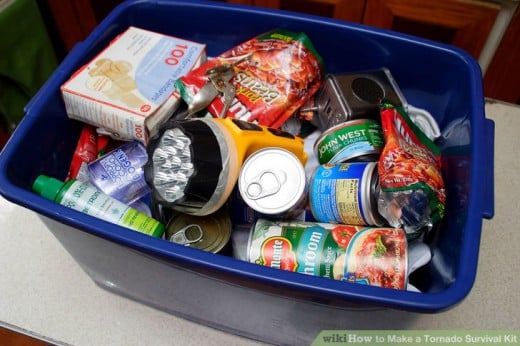
In Public
Quite often, severe weather such as tornadoes can occur when people are in public, especially during tornado season. As the case may be, people should always be aware of their options whenever they are in public, particularly during a severe weather threat.
Schools
Almost every school in parts of the country where tornadoes are a threat practices tornado drills. This means that in most cases, students and teachers are already aware of what to do should a tornado threatens. During a tornado warning, most of those who have practiced such drills know to:
- Go to the basement or to an inside hallway at the lowest level of the structure.
- Avoid places with wide-span roofs such as auditoriums, cafeterias, or large hallways.
- Assume the “tornado position.” This is a way of positioning the body to protect the most vulnerable areas from falling debris. This position entails use the arms to protect head and neck, while making the body itself as small of a target as possible for falling debris.

Shopping Centers/Stores
Unfortunately, many retail stores and shopping centers do not routinely engage in tornado drills. For that reason, it is up to individuals to know what to do in the event of a tornado emergency. The following list of suggested options in such a scenario:
- Do not leave the store. You are far safer in a building during a tornado than in a car, attempting to drive away.
- Avoid standing in the front of the store. Most retail stores are constructed with a great deal of glass making up their front entrances. Should a tornado strike the store’s building, flying glass will become deadly shrapnel in the high winds, resulting in severe injury and/or death.
- Consider positioning yourself in the center of the store. Try to avoid isles that contain heavy or sharp objects that could be picked up and become flying debris. However, seeking shelter in the stores’ bathrooms—with their small and enclosed areas—is the best option.
In a Vehicle
Strong winds from a tornado are capable of picking up debris and depositing it miles away from where it was lifted. In the case of EF4 and EF5 tornadoes, heavy objects such as vehicles are just as vulnerable to being flung great distances as paper. For this reason, it is important to know what to do if you are driving and become caught in severe weather. The best options are:
- Avoid trying to outrun a tornado. Quite often, a tornado can travel in erratic patterns. They may be stationary, slow sown, or pick up amazing speed—all in one cycle. Tornadoes have the potential to travel over 60 mph (96 kph), and unlike automobiles, don't have to follow road patterns. If you see a tornado, and there is time and distance enough, consider driving on a 90-degree angle away from the tornado, as opposed to trying to outrun it.
- If you see a tornado developing where you are driving, the best thing to do is to pull over and evacuate the vehicle. Seek shelter in the nearest sturdy building or storm shelter (do not hide under your car. The wind could potentially roll your car over). Potentially sturdy structures to look for while driving are fast food restaurants and banks. Fast food restaurants will usually have a cooler that could withstand a tornado similar to a safe in a bank.
- If there are no available buildings or shelters, find the nearest ditch or low-lying area and crouch low to the ground covering your head with your arms.
- Avoid parking or taking shelter under highway underpasses! Underpasses may seem like a safe place to hide, but this is a myth. Winds from a tornado can accelerate through the small places of an underpass, causing a wind-tunnel effect. The result is that already high winds are increased, causing any object underneath the pass to be blown away.
- In the event that there is no time to find a shelter, or even to find shelter outside the car in a ditch, stay in your car with the seat belt fastened. Slump down below the windows and cover yourself with a blanket. The car should be kept running, so airbags will deploy if necessary.
Whether 2016 ends up being a banner year for tornadoes, or record year for fewest tornadoes, at some point, some place this year, tornadoes will occur. For those without the benefit of specialized storm shelters, planning ahead in advance of tornado season may be the best advantage in preparing for the inevitable threat of tornadoes, and avoiding injury or worse—especially in the most tornado-prone regions of the country.
See also: Disaster Planning & Preparation/Facebook
- Donate
If you like what you'e read hear, please feel free to contribute to future publications

